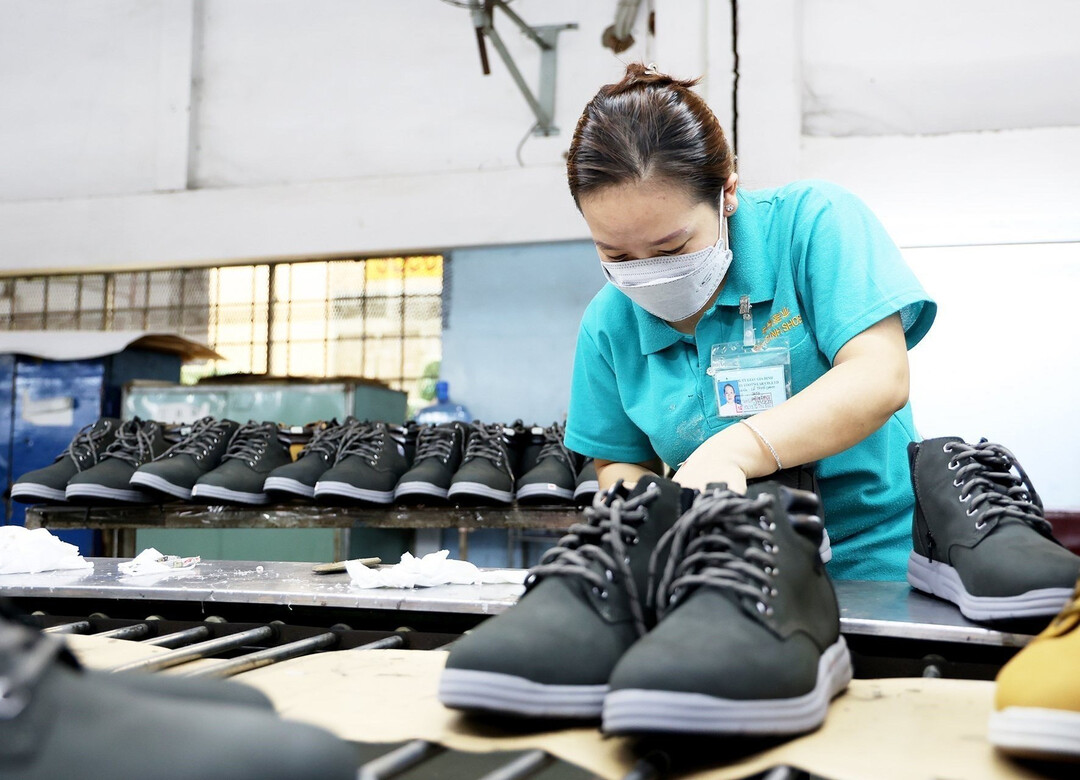
HÀ NỘI — Vietnamese footwear companies are increasingly adopting green standards to enhance their brand value and competitiveness in the global market.
Nguyễn Đức Thuấn, chairman of TBS Group, highlighted that while Vietnam's leather, footwear, and handbag industry possesses significant growth potential, embracing green practices is crucial for its further development.
Catlongs Co., Ltd, led by Chairman Kiều Thị Tâm Anh, exemplifies this shift. The company has incorporated recycled materials, such as rice husks and peanut shells, into shoe soles for its European exports, demonstrating a proactive approach to green exports.
The footwear industry faces mounting pressure to adopt green practices due to its significant environmental impact.
The global trend towards sustainability has led to increasingly stringent environmental standards for businesses, particularly exporters.
To remain competitive in the global supply chain, footwear companies are compelled to invest in automated production lines, artificial intelligence (AI), and sustainable development practices.
Phan Thị Thanh Xuân, Vice Chairwoman and General Secretary of the Vietnam Leather, Footwear, and Handbag Association (Lefaso), emphasized the criticality of green production for maintaining export growth.
The industry faces significant challenges, primarily from new sustainability standards imposed by major importing countries, including requirements for sustainable production practices, social responsibility, and environmental accountability.
The EU market, for instance, now mandates sustainable designs and demands complete traceability and transparency throughout the supply chain.
Despite these challenges, the domestic footwear industry aims to achieve a 10% year-on-year increase in export value, reaching approximately $29 billion this year.
By 2030, the industry targets an export value of $38-40 billion.
The industry's vision for sustainable development is anchored in the circular economy model, with a focus on completing the domestic production value chain by 2035, effectively participating in the global value chain, and developing several regional and world-class brands.
To achieve these goals, Xuân recommends that enterprises prioritize transparency in their product supply chains, starting from the raw materials stage.
Sustainable production practices aligned with the circular economy and a strong commitment to social and environmental responsibility are crucial.
Xuân further emphasized the importance of increasing the localization rate of raw materials, advocating for the establishment of a dedicated raw material trading center.
Stringent requirements on the origin of raw materials are increasingly enforced in major export markets like the EU and the US, necessitating compliance from Vietnamese footwear companies to maintain their competitive edge.
According to Lefaso, Vietnam ranks third globally as a footwear producer, following China and India, and is the second-largest exporter worldwide after China.
The footwear industry contributes approximately eight percent to the country's overall GDP.
In 2024, the leather, footwear, and handbag industry achieved a total export turnover of $27 billion, a 11.5% increase year-on-year.
This includes $23.2 billion from footwear exports (13.2% growth) and $3.8 billion from suitcases, bags, and briefcases (9.7% growth).
[Copyright (c) Global Economic Times. All Rights Reserved.]






























